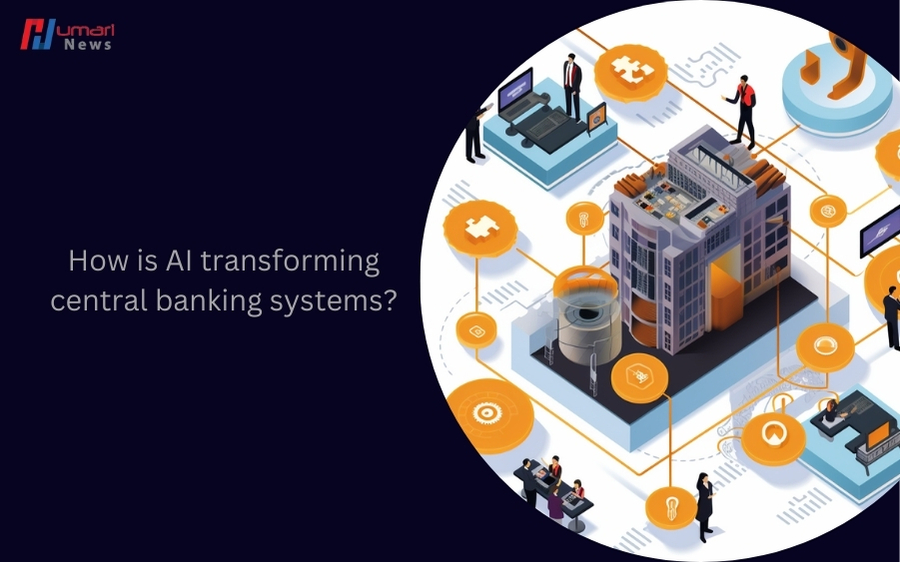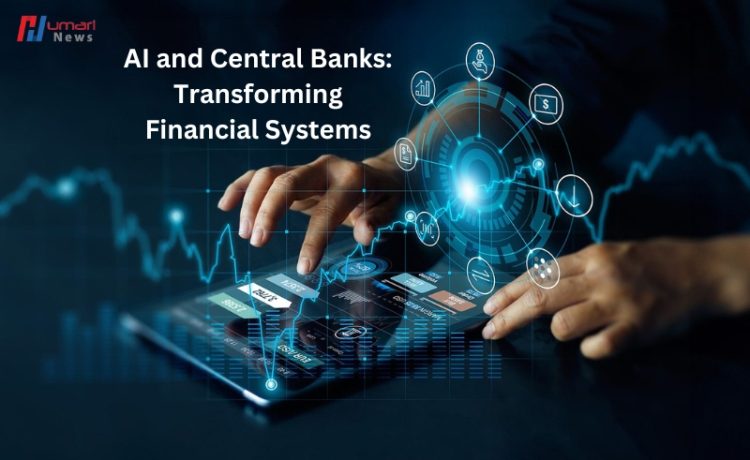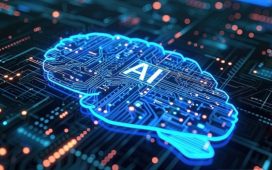In today’s rapidly changing world, the implementation of AI in financial systems has become crucial to the transformation of ai and central bank systems across the globe. With the potential to revolutionize the world economy, AI is offering both opportunities and challenges to monetary authorities as they navigate the intersection of monetary policy and financial stability.
What Is AI and Why Does It Matter?

Artificial Intelligence, or AI, refers to machines that can think and learn like humans. Imagine having a super-smart assistant who never sleeps and can analyze huge amounts of data in seconds. Sounds cool, right? That’s what AI does. It helps us make better decisions by processing information quickly, which is crucial for central banks that have to monitor the economy constantly.
Importance of AI in Financial Institutions
AI plays a vital role in financial institutions by enabling the processing of vast amounts of data and identifying patterns that can optimize operations and reduce costs.
In various operational fields such as payments, lending, insurance, and asset management, AI is enhancing efficiency and streamlining processes. For instance, through the use of chatbots, financial institutions can provide timely customer support, reduce costs, detect fraud, and comply with regulations more effectively.
Advancements in the Payment Industry
AI is making significant advancements in solving long-standing issues in the payment industry, such as Know Your Customer (KYC) and Anti-Money Laundering (AML) regulations.
By leveraging AI, financial institutions can enhance compliance, reduce costs, and mitigate the fragmentation of correspondent banking systems worldwide. This enhances the overall integrity of the financial system while also increasing the effectiveness of operations.
Transforming Credit Appraisal
AI has also revolutionized credit appraisal processes by utilizing a broader range of parameters, including non-financial ones, to assess creditworthiness accurately.
This innovation enables financial institutions to extend credit to individuals who may have been overlooked by traditional credit scoring models, thus promoting financial inclusion and access to credit for underserved populations.
Addressing Emerging Threats
While AI offers numerous benefits to the financial sector, it also presents new challenges, particularly in the realm of cybersecurity.
The increased complexity of AI systems has heightened the risk of cyber attacks, including phishing, malware, and data poisoning. Additionally, the potential for bias and discrimination in AI models poses ethical concerns, particularly in decisions related to lending and insurance that affect marginalized communities.
Central Banks Embracing AI
Central banks are actively embracing AI to achieve their objectives, including data collection, statistical analysis, and payment system management. Initiatives like the BIS Innovation Hub’s Project Aurora and Project Agorá demonstrate how AI can enhance anti-money laundering efforts, optimize payment networks, and bolster cybersecurity measures.
Central banks recognize the potential of AI to strengthen financial structures and safeguard against cyber threats by automating processes and improving threat detection capabilities.
FAQs:
1. How is AI transforming central banking systems?

AI is revolutionizing central banking systems by providing tools that help monetary authorities optimize their work, enhance financial stability, and counter threats. Through AI, central banks can collect data, analyze market trends, manage payment systems, and improve cybersecurity efforts.
2. What are the benefits of implementing AI in financial institutions?
Implementing AI in financial institutions can lead to increased efficiency, cost reduction, improved customer support, fraud detection, and compliance with regulations. AI can also enhance credit appraisal by considering a larger number of parameters, including non-financial ones, to provide a more accurate assessment of creditworthiness.
3. What are the risks associated with AI in the financial sector?
While AI offers numerous benefits, it also poses risks such as cybersecurity threats, bias in decision-making processes, dependency on a few providers, and market fluctuation. Cyber attacks can become more complex with the introduction of generative AI, and bias in AI models can result in discrimination in loan and insurance decisions.
Conclusion:
In conclusion, AI is poised to become an indispensable tool in central banking and overall financial systems. Despite the numerous advantages in terms of efficiency and financial innovation, it is essential to address the risks associated with AI integration proactively. As the guardians of financial stability, central banks have a critical role to play in leveraging AI for the greater good while mitigating potential pitfalls. By embracing AI responsibly and ethically, central banks can propel the financial sector into a new era of efficiency, security, and innovation.







